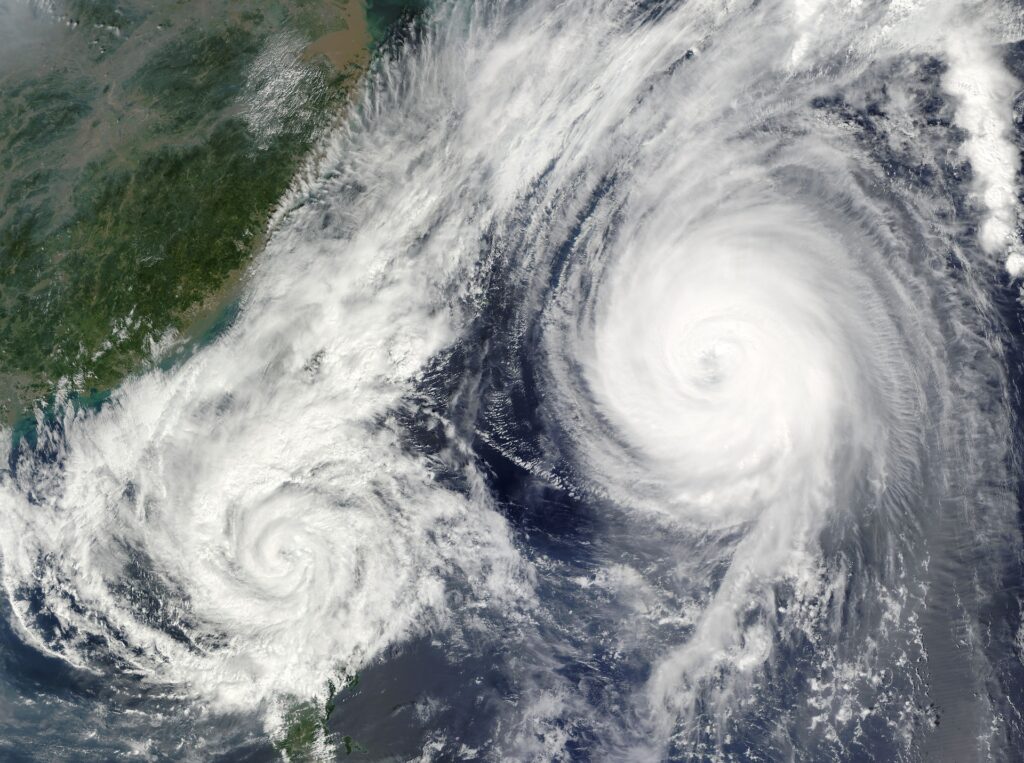Integration of emissions trading systems: where are we at today?
This is the second instalment of the Topic of the Month: Global climate and methane policies in times of COP27
The conclusions reached at COP26 in Glasgow on the Article 6 rulebook should help achieving further mitigation using market mechanisms, facilitate the coordination of international efforts, and increase carbon market integration. Despite little progress made during the 27th Conference of the Parties (COP 27) of the UNFCCC in Egypt, the implementing rules will have to be further specified at the next COP 28 in Dubai in November 2023. This offers us a timely occasion to reflect on some of the main takeaways from the FSR project LIFE DICET for carbon market integration, which has been presented twice at the COP27 side event. Indeed, we expect a growing number of ETSs to be linked indirectly through Article 6.4, while some may use Article 6.2 to account for the trade of their mitigation outcomes through linking.
Concluded in September 2022, the project aimed to support the European Union (EU) and national policymakers in deepening international cooperation for the development and the possible integration of carbon markets.
Integrating Emissions Trading Systems (ETSs) implies facing a long list of organisational, legal, political, and social challenges. These can be addressed by strengthening cooperation between the actors since transparency and trust among regulators are fundamental. FSR regularly organised policy dialogues for that purpose. The authorities should be able to evaluate the pros and cons of different forms of carbon market integration with potential partners. This is precisely what FSR did, by producing the comparative assessment summarised below.
The development of emissions trading in the world
The EU Emissions Trading System (EU ETS) is a pivotal market-based instrument for greenhouse gas (GHG) emission reductions for 30 countries. It has been a pioneer and a model for designing other regulated emissions trading systems (ETSs) in the world.
Several emissions trading systems (ETSs) have been established around the world as a tool for achieving jurisdictions’ climate goals. The growing number of countries that have implemented ETSs is a sign of keen interest in climate change-associated issues and the effectiveness of this instrument for reducing GHG emissions.
These cap-and-trade programmes operate at a range of governance levels, including the supranational (EU), the national (Switzerland, New Zealand, Mexico, China, South Korea, Kazakhstan), the state/province (California and Quebec, among others), and the city-level (Tokyo, Saitama). As of the beginning of 2022, 17% of global GHG emissions are regulated under an ETS.

LIFE DICET has developed a comparative assessment of some of the main ETSs in the world, namely those of the European Union, California, China, New Zealand, Québec and Switzerland. It provided an up-to-date overview of how these regulated carbon markets work. A preliminary report outlined the main characteristics of the ETSs in general (Report ETSs at a glance). Then, the comparative assessment dug deeper into certain design features, and their implications for linking: environmental ambition (Report 1), price control mechanisms (Report 2), carbon leakage measures (Report 3) and use of offsets (Report 4).
- European Union: operational since 2005, the EU ETS includes sectors like power production, oil refineries, steel works and the production of iron, aluminium, metals, cement, lime, glass, ceramics, pulp, paper, cardboard, acids and organic chemicals, and civil aviation.
- California – Québec: the California and Québec ETSs were established in 2012 and have been linked since 2014. They cover activities such as electricity generation, large industries, and the combustion of fuel, including all commercial, residential, and small industrial sources. They also cover the use of fuel for transportation.
- China: provincial pilots have been in place since 2013. Their scopes vary but often include power, heat, and part of industrial production above certain emissions thresholds. In 2021, a national ETS was launched.
- New Zealand: operational since 2008, the New Zealand ETS includes activities from industry sectors, including liquid fossil fuels, stationary energy, industrial processes, synthetic greenhouse gases as well as forestry, agriculture, and waste.
- Switzerland: operational since 2008, the Swiss ETS is aligned with the EU ETS in terms of sectorial scope, allowances distribution, and limitation in the use of offsets. Switzerland was the first country to successfully link its ETS with the EU ETS in 2019 after ten years of negotiations.
- For a broad overview of the different ETSs studied in LIFE DICET, read this report: Emissions trading systems at a glance, 2020.
The challenges of integrating carbon markets
One of the future challenges confronting the EU ETS as well as other ETSs around the world is to integrate with other compatible carbon markets. This constituted the main contribution of the research in LIFE DICET, supporting the overall ambition of establishing a global carbon market.
Since climate change is overwhelmingly a global challenge, single-party contributions are not enough. Hence, international cooperation on carbon markets can play a key role in overcoming the climate crisis and in reducing GHG emissions cost-effectively. Cost-effectiveness is the basic economic principle in support of carbon market integration, as this can achieve a given overall emissions reduction target at minimum cost.
The LIFE DICET project aimed to understand the apparent scarcity of links better. The four reports mentioned above have investigated the implications of different 1) environmental ambition levels, 2) price control mechanisms, 3) carbon leakage prevention measures, and 4) offset provisions, for linking ETSs. Not least, the final report on ETS alignment identifies design elements requiring alignment or harmonisation and discusses how that can be achieved in linking negotiations. It also draws up a proposal for a price collar for the linked system.
Outlined below are a few of the main policy insights from the different reports associated with ETS linking.
1. Linking ETSs with different levels of environmental ambition
A range of economic and political factors can diminish a jurisdiction’s willingness or ability to link with another ETS. When choosing a linking partner, many factors are weighed up, which transcend the compatibility of ETS designs and differences in environmental ambition. Linkages between absolute- and relative-cap ETSs are problematic in that overall emissions may increase. In the literature, non-cooperative linking most often leads to higher emissions than if the same ETSs operated under autarky.
To learn more, read: “Emissions trading systems with different levels of environmental ambition: implications for linking“, November 2020.
2. Linking ETSs with different price control mechanisms
Divergences along key dimensions of price control mechanisms (PCMs) may impact linking between ETSs in several ways, positive or negative. Restricted linking, e.g. exchange ratios or import quotas on allowances, could mitigate adverse effects of PCM differences between prospective partners. Convergence towards soft and price-based PCMs is both desirable and likely difficult to accomplish. The most effective way to reduce long-term price uncertainty remains the establishment of an environmentally ambitious climate policy framework.
To learn more, read “Emissions trading systems with different price control mechanisms: implications for linking“, November 2020
3. Linking ETSs with different measures for carbon leakage prevention
By inducing convergence of allowance prices, ETS linking reduces internal competitive distortion due to differences in carbon prices. However, given pre-link differences in anti-leakage measures, price convergence can highlight or even exacerbate potential competitive distortions. In a linking context, output-based allocation may amplify or attenuate competitive distortions by interacting with post-link changes in allowance prices. Differences in anti-leakage measures do not preclude linking in a technical sense. However, with time, some harmonisation may prove necessary for the political sustainability of the linkage.
To learn more, read “Emissions trading systems with different measures for carbon leakage prevention: implications for linking“, September 2021.
4. Linking ETSs with different offset provisions
Heterogeneity in offset provisions between prospective partners in an ETS linkage should be addressed for the sake of linking but is not regarded as a priority. Co-benefits of offset projects are typically insufficiently incentivised, while adverse impacts have been reported on the local communities. In general, the experience with the Clean Development Mechanism can inform offset provisions design. The Paris Agreement and its Article 6 can foster ETS linking, in particular through the internationally transferred mitigation outcomes (ITMOs) and the Article 6.4 Mechanism, but requires additional coordination by prospective partners on key aspects.
To learn more, read “Emissions trading systems with different offsets provisions: implications for linking“, January 2022.
5. ETS Alignment: reforms for carbon market integration
Before negotiations on ETS linking, mutual trust is crucial. During the negotiations, a degree of alignment of core design features of ETSs should be agreed upon. Built-in reviews and consultations, as well as mechanisms for revision, dispute resolution and potential future delinking, are fundamental to ensure that linking works over time after the initial negotiations. While some features (e.g., PCMs) require compatibility, other design elements may not require strict compatibility if they lead to comparable outcomes. Other ETS features do not need to be aligned but would benefit from coordination. Establishing a common price collar (i.e., a price floor and a price ceiling) among the linked jurisdictions would reduce price risk and uncertainty, and can hence be beneficial for regulators, regulated entities and investors.
To learn more, read “ETS alignment: a price collar proposal for carbon market integration“, September 2022.
Check out LIFE DICET’s resources and material.







